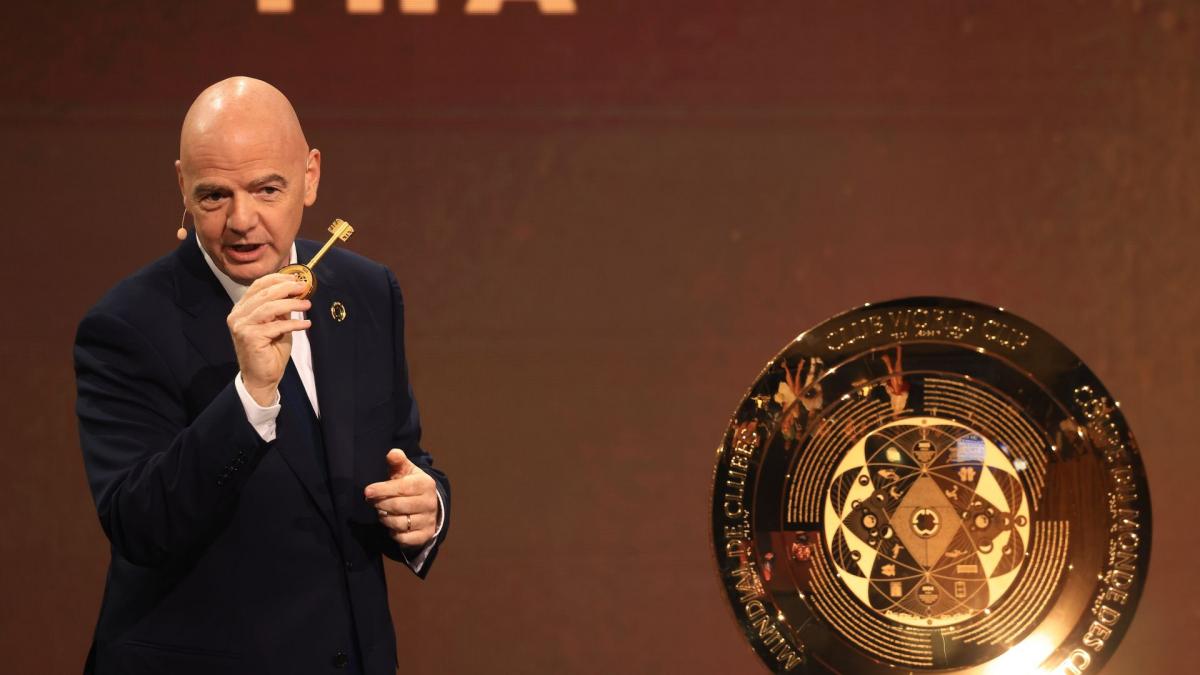
Announced with skepticism, even hostility, the new 32 team World Cup currently vibrates the United States, despite the many criticisms that have accompanied its birth. Too long, too artificial, poorly wedged in an already saturated calendar: the reform carried by FIFA was perceived by many as a flight forward, one more competition in an already hypertrophied football. However, since the start, the group phase meetings have attracted people in the stadiums, generated a real popular fervor and aroused unexpected media interest. This life-size test is being transformed into a strategic opportunity for the United States, which capitalize on their logistical know-how and the power of their market to reaffirm their place in the diplomatic game of world football.
While this club competition is in full swing, it is behind the scenes that the bustle is the most palpable: the 2029 club World Cup, still without official host, is in all discussions. The big players in the round ball are already sharpening their arguments to win in the race for organization. Because if FIFA remains silent, the pressure rises, especially around three contenders of weight: Brazil, carried by a sporting dynamic found thanks to the Flamengo – Fluminense – Botafogo – Palmeiras quartet, but also, and above all, the Iberian Tandem formed by Spain and Portugal, already chosen as hosts of the 2030 World Cup. This temporal proximity raises questions, but did not cool the ambition of the peninsula. For many, a double 2029-2030 would be a strong signal from FIFA in favor of European stability and guaranteed profitability.
Spain and Portugal in good posture
Among the files already well advanced, that of the Portugal-Spain pair intrigues as much as it divides. Already co -organizers of the 2030 World Cup with Morocco, the two Iberian countries aims to double the bet by also welcoming the 2029 edition, according to TNT Sports Brasil. Officially, nothing has been done, but there are many signals: diplomatic exchanges, strengthening partnerships with sports authorities, and active lobbying with influential FIFA members. Their strength? High-level infrastructure already planned for 2030, recognized know-how in terms of organization, and logistical proximity which would facilitate the chain of the two editions. But this ambition also raises questions. Can we decently offer two major consecutive competitions to the same region in the world? For some, it would be to make Europe an exclusive playground. For others, on the contrary, it is the promise of controlled continuity and guaranteed success. FIFA will have to decide between efficiency and geographic balance. And in this context, the United States, which is currently hosting the Club World Cup, could play the referees-even the last-minute candidates. Their ability to organize major sporting events is no longer to be proven, as evidenced by this 2025 edition which, if it ends as well as it has started, will become a weight argument behind the scenes of Zurich.
Another actor, much more discreet but just as ambitious, begins to be talked about: Indonesia. Far from Western spotlights, this Asian giant methodically advances its pawns in the race at 2029. In its favor, several structuring elements: a breeding ground for constantly increasing licensees, a population passionate about football, and strong political support to make sport a lever of international influence. Above all, the presence of FIFA regional offices in Jakarta since 2024 strengthens institutional links and suggests strategic proximity. Indonesia has already shown its seriousness by welcoming the U-17 World Cup, and is now positioned as the standard football standard bearer. In a world where FIFA seeks to diversify its influence areas, Jakarta could become the surprise of this battle for 2029. Behind the image of Outsider, it is perhaps a future credible host who settles. More broadly, this competition serves as a laboratory today: infrastructure, crowds, organization, worldwide dissemination, Fans experience – all indicators are scrutinized by FIFA, which sees in American success a potential general rehearsal. Some even speak of a return from the United States to the race for 2029, despite their co-organization of the male World Cup in 2026.
Another dossier in reflection: that of the Australia-Nouvelle-Zéland duo, carried by the popular and organizational success of the 2023 women's World Cup. Strong this experience, the two Oceanian nations now want to cross a CAP by welcoming a male world cup. The logistical challenge would be immense, but the political will is there, with the ambition to anchor football in a growing region. But beyond stadiums and lawns, it is a political and geo-sporting battle that is committed, where each declaration, each organizational performance and each full-stadium photo becomes a piece on the chessboard. FIFA, now fully committed to its globalization strategy of football, will have to decide between continuity and redistribution of cards. Should we strengthen the European presence through the Portugal-Spain duo already involved in 2030? Should Brazil and South America be rewarding, at the heart of the historical identity of football? Or should we bet on the power of a high-expanding North American market, carried by a new fervor? One thing is certain: if the Club World Cup should prove itself in the coming weeks, it could completely redefine the diplomatic chessboard of the 2029 Club World Cup.
Pub. the
– Maj the

